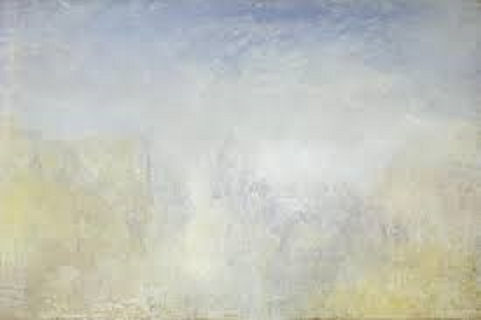Spadina Literary Review — edition 18 page 21
memoir

j.m.w. turner, church of santa maria della salute
London Galleries
by Francesca Pierini
When I returned to London, I was profoundly scared of having made the wrong choice by interrupting my therapy. For the previous year, therapy had been a painful but very strong support. I could feel that it was changing everything deeply. To this day, fifteen years later, I still have the feeling I interrupted something important. So, once in London, for a while I kept in contact with my doctor, writing letters and recording my voice on tape. I used to tell her about my visits to galleries and museums. I used to go often, especially to the National Gallery when I was working at the St. Martin’s Lane Hotel and to the British Museum when I was studying at SOAS, the School of Oriental and African Studies. I also went to many other places, almost all the places mentioned in the guidebooks.
There is so much beautiful art in London. An exhibition that brought tears to my eyes and made me record a tape for my Dottoressa was the Turner exhibition at the old Tate Gallery. I was expecting something clever and descriptive when I went to see it, just because this is the way Turner was labelled in my middle school text book: an important paesaggista, a landscapist. But I remember I found his paintings to be so much more than that, I found visions of depth and clarity expressed through fog, a thick layer of blinding murkiness applied to familiar sights. Those clouds of yellow and gold covered the sights, yet somehow they were invasive but not flat, and all dimensions (that perfect fog and what was beneath it) managed to stay alive. I remember, in particular, a painting of the Salute church in Venice covered in brushes of mist. I remember I recognized the cupola with a gasp, but then I asked myself: how could I guess that this was that church? I wanted to scratch the outer layer away and see what was beneath it. Those paintings, to me, were miraculous: a subbuglio, a turmoil, of golden blue tornadoes and a serene calm underneath them.
I know nothing about art, even if growing up and traveling I have realized how much an Italian person born and schooled in the 70s knows about it without even realizing. Being educated in classical studies in those years meant that I was expected to know these things, and knowing them mainly meant to be able to locate them in the right historical period, and to discern between them according to the dominating narratives. There was a way to like and appreciate these things, and a way to use this knowledge to distinguish yourself from other people. Italian every-day discourses are filled with funny stories of American people who do not understand ancient art and architecture. In time, I have grown to despise this attitude, this deluded way of using knowledge to feel that you are better than other people, identifying all art and knowledge with European art and knowledge.